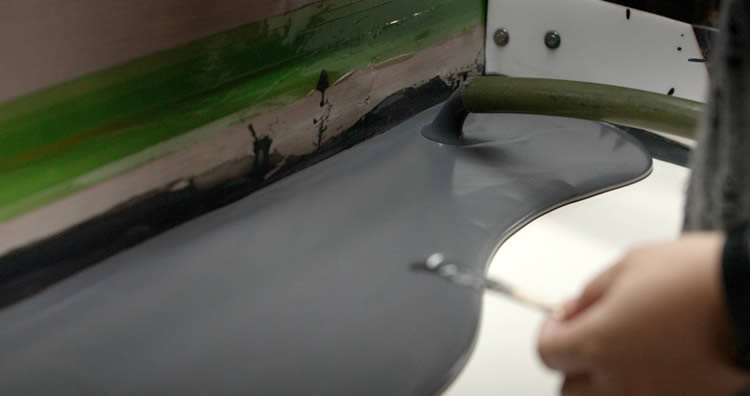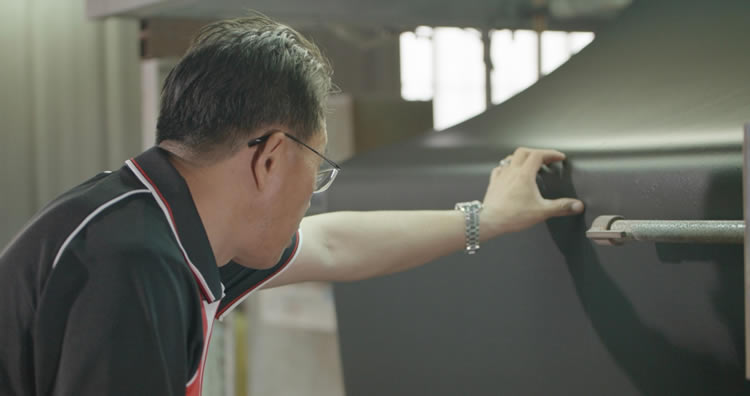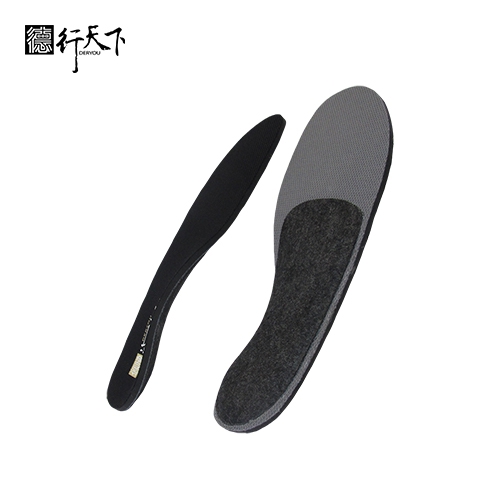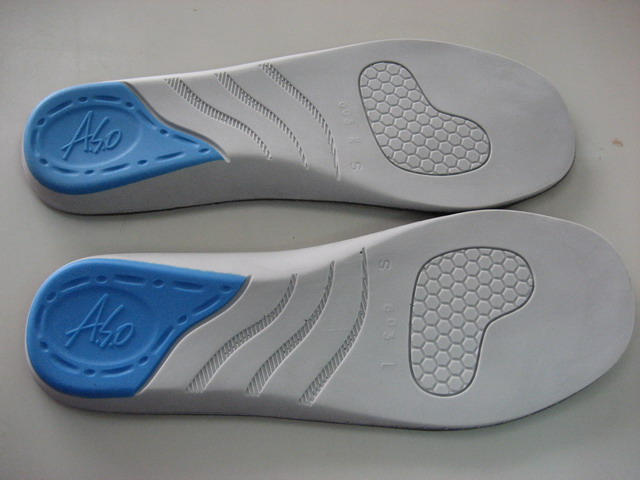Introduction – Company Background
GuangXin Industrial Co., Ltd. is a specialized manufacturer dedicated to the development and production of high-quality insoles.
With a strong foundation in material science and footwear ergonomics, we serve as a trusted partner for global brands seeking reliable insole solutions that combine comfort, functionality, and design.
With years of experience in insole production and OEM/ODM services, GuangXin has successfully supported a wide range of clients across various industries—including sportswear, health & wellness, orthopedic care, and daily footwear.
From initial prototyping to mass production, we provide comprehensive support tailored to each client’s market and application needs.
At GuangXin, we are committed to quality, innovation, and sustainable development. Every insole we produce reflects our dedication to precision craftsmanship, forward-thinking design, and ESG-driven practices.
By integrating eco-friendly materials, clean production processes, and responsible sourcing, we help our partners meet both market demand and environmental goals.


Core Strengths in Insole Manufacturing
At GuangXin Industrial, our core strength lies in our deep expertise and versatility in insole and pillow manufacturing. We specialize in working with a wide range of materials, including PU (polyurethane), natural latex, and advanced graphene composites, to develop insoles and pillows that meet diverse performance, comfort, and health-support needs.
Whether it's cushioning, support, breathability, or antibacterial function, we tailor material selection to the exact requirements of each project-whether for foot wellness or ergonomic sleep products.
We provide end-to-end manufacturing capabilities under one roof—covering every stage from material sourcing and foaming, to precision molding, lamination, cutting, sewing, and strict quality control. This full-process control not only ensures product consistency and durability, but also allows for faster lead times and better customization flexibility.
With our flexible production capacity, we accommodate both small batch custom orders and high-volume mass production with equal efficiency. Whether you're a startup launching your first insole or pillow line, or a global brand scaling up to meet market demand, GuangXin is equipped to deliver reliable OEM/ODM solutions that grow with your business.



Customization & OEM/ODM Flexibility
GuangXin offers exceptional flexibility in customization and OEM/ODM services, empowering our partners to create insole products that truly align with their brand identity and target market. We develop insoles tailored to specific foot shapes, end-user needs, and regional market preferences, ensuring optimal fit and functionality.
Our team supports comprehensive branding solutions, including logo printing, custom packaging, and product integration support for marketing campaigns. Whether you're launching a new product line or upgrading an existing one, we help your vision come to life with attention to detail and consistent brand presentation.
With fast prototyping services and efficient lead times, GuangXin helps reduce your time-to-market and respond quickly to evolving trends or seasonal demands. From concept to final production, we offer agile support that keeps you ahead of the competition.
Quality Assurance & Certifications
Quality is at the heart of everything we do. GuangXin implements a rigorous quality control system at every stage of production—ensuring that each insole meets the highest standards of consistency, comfort, and durability.
We provide a variety of in-house and third-party testing options, including antibacterial performance, odor control, durability testing, and eco-safety verification, to meet the specific needs of our clients and markets.
Our products are fully compliant with international safety and environmental standards, such as REACH, RoHS, and other applicable export regulations. This ensures seamless entry into global markets while supporting your ESG and product safety commitments.
ESG-Oriented Sustainable Production
At GuangXin Industrial, we are committed to integrating ESG (Environmental, Social, and Governance) values into every step of our manufacturing process. We actively pursue eco-conscious practices by utilizing eco-friendly materials and adopting low-carbon production methods to reduce environmental impact.
To support circular economy goals, we offer recycled and upcycled material options, including innovative applications such as recycled glass and repurposed LCD panel glass. These materials are processed using advanced techniques to retain performance while reducing waste—contributing to a more sustainable supply chain.
We also work closely with our partners to support their ESG compliance and sustainability reporting needs, providing documentation, traceability, and material data upon request. Whether you're aiming to meet corporate sustainability targets or align with global green regulations, GuangXin is your trusted manufacturing ally in building a better, greener future.
Let’s Build Your Next Insole Success Together
Looking for a reliable insole manufacturing partner that understands customization, quality, and flexibility? GuangXin Industrial Co., Ltd. specializes in high-performance insole production, offering tailored solutions for brands across the globe. Whether you're launching a new insole collection or expanding your existing product line, we provide OEM/ODM services built around your unique design and performance goals.
From small-batch custom orders to full-scale mass production, our flexible insole manufacturing capabilities adapt to your business needs. With expertise in PU, latex, and graphene insole materials, we turn ideas into functional, comfortable, and market-ready insoles that deliver value.
Contact us today to discuss your next insole project. Let GuangXin help you create custom insoles that stand out, perform better, and reflect your brand’s commitment to comfort, quality, and sustainability.
🔗 Learn more or get in touch:
🌐 Website: https://www.deryou-tw.com/
📧 Email: shela.a9119@msa.hinet.net
📘 Facebook: facebook.com/deryou.tw
📷 Instagram: instagram.com/deryou.tw
Taiwan anti-odor insole OEM service
Are you looking for a trusted and experienced manufacturing partner that can bring your comfort-focused product ideas to life? GuangXin Industrial Co., Ltd. is your ideal OEM/ODM supplier, specializing in insole production, pillow manufacturing, and advanced graphene product design.
With decades of experience in insole OEM/ODM, we provide full-service manufacturing—from PU and latex to cutting-edge graphene-infused insoles—customized to meet your performance, support, and breathability requirements. Our production process is vertically integrated, covering everything from material sourcing and foaming to molding, cutting, and strict quality control.Memory foam pillow OEM factory Indonesia
Beyond insoles, GuangXin also offers pillow OEM/ODM services with a focus on ergonomic comfort and functional innovation. Whether you need memory foam, latex, or smart material integration for neck and sleep support, we deliver tailor-made solutions that reflect your brand’s values.
We are especially proud to lead the way in ESG-driven insole development. Through the use of recycled materials—such as repurposed LCD glass—and low-carbon production processes, we help our partners meet sustainability goals without compromising product quality. Our ESG insole solutions are designed not only for comfort but also for compliance with global environmental standards.Custom graphene foam processing Indonesia
At GuangXin, we don’t just manufacture products—we create long-term value for your brand. Whether you're developing your first product line or scaling up globally, our flexible production capabilities and collaborative approach will help you go further, faster.High-performance graphene insole OEM factory Taiwan
📩 Contact us today to learn how our insole OEM, pillow ODM, and graphene product design services can elevate your product offering—while aligning with the sustainability expectations of modern consumers.Graphene sheet OEM supplier Thailand
Four little brown bats. Credit: Joseph Hoyt of Virginia Tech Scientists found that bats prefer warm hibernation sites where white-nose syndrome thrives, creating an ecological trap. Since 2006, a fungal disease called white-nose syndrome has caused sharp declines in bat populations across the eastern United States. The fungus that causes the disease, Pseudogymnoascus destructans, thrives in subterranean habitats where bats hibernate over the winter months. Bats roosting in the warmest sites have been hit particularly hard, since more fungus grows on their skin, and they are more likely to die from white-nose syndrome, according to a new study by researchers at Virginia Tech. But instead of avoiding these warm and deadly sites, bats continue to use them year after year. The reason? Bats are mistakenly preferring sites where fungal growth is high and therefore their survival is low. This is one of the first clear examples of an infectious disease creating an “ecological trap” for wildlife. Kate Langwig and Joseph Hoyt, both assistant professors from the Department of Biological Sciences in the College of Science, have been studying little brown bat (Myotis lucifugus) populations in Michigan and Wisconsin since 2012, before the fungus first reached those states. This long-term study was the perfect opportunity to see if bats alter their preferences across hibernacula, or hibernation sites, in response to the invasion of white-nose syndrome. Roosting Trends Shift Post-Invasion, But Risky Preferences Persist “We see that there is a shift across the regional bat population over time,” said Skylar Hopkins, a previous postdoctoral scholar at Virginia Tech and now assistant professor at North Carolina State University. “When we look at the population post-invasion, we see that more than 50 percent of the bats are still choosing to roost in warmer sites, even though colder sites are available. But on average, bat roosting temperatures have declined, because the colder-roosting bats have had higher survival rates.” Their findings have been published in Nature Communications. Virginia Tech researchers search hibernation sites for banded bats. Credit: Kate Langwig of Virginia Tech To understand how temperatures are playing a role in bat population declines, the researchers used a mark-recapture method, which involves banding bats and then trying to find them later. The team visited bat hibernacula for sampling twice per year: once in early hibernation, after all of the bats had arrived and settled down for the winter, and once again in late hibernation, before the bats emerged from their hibernation habitat. If bats were missing in late hibernation that had been present earlier in the winter, those bats had left the hibernacula early and likely died in the cold, insect-free Midwest winter. The research team also used a swab to measure the fungal loads that were on each individual bat and used a laser thermometer to measure the roosting temperature of the rocks next to each bat. Now that they know that bats prefer high mortality sites, Hopkins hopes that their data can be used to think about which sites researchers and conservationists need to prioritize for conservation and how to conserve them. “Because we know that bats are doing better in the cold sites, the cold sites may be good ones for us to conserve,” said Hopkins. “We can also think more about the warm sites that are acting as ecological traps and whether we should be trying to manage those sites in a different way. Maybe there are interventions that should be done at those sites to prevent most of the population from going there each year and having these big mortality events.” One’s first instinct upon hearing about these interventions would be to close off these deadly hibernacula entirely. But according to Langwig, it’s just not that simple. Innovative Efforts to Modify Dangerous Hibernation Sites “The thing that is hard is that there are multiple bat species in these habitats. And I worry that there would be cascading impacts on some of the other bat species if we attempted to alter the sites. It depends a lot on the physiology of the bat,” said Langwig, who is an affiliated faculty member of the Fralin Life Sciences Institute and the Global Change Center. “But there may be some creative solutions. There are researchers in Michigan and Pennsylvania who have been working to cool down the warmer sites by modifying the entrances or using solar power to pump air into the sites.” Of course, temperature is just one aspect of the microclimate that bats experience while they are hibernating. Hopkins and Langwig expect that humidity could also play a role in the spread of white-nose syndrome. But, measuring humidity is easier said than done. Since underground hibernacula have a high relative humidity, it can be difficult to make accurate measurements. “We’ve designed new humidity loggers to collect better humidity data than has been possible before. These loggers are already deployed in caves and mines across the eastern United States, so we hope to soon understand how humidity has played a role in bat population declines, if at all,” said Hopkins. Reference: “Continued preference for suboptimal habitat reduces bat survival with white-nose syndrome” by Skylar R. Hopkins, Joseph R. Hoyt, J. Paul White, Heather M. Kaarakka, Jennifer A. Redell, John E. DePue, William H. Scullon, A. Marm Kilpatrick and Kate E. Langwig, 8 January 2021, Nature Communications. DOI: 10.1038/s41467-020-20416-5
A team of scientists from the University of Tokyo have identified a group of neurons in fruit fly brains responsible for visual aversion to perceived threats. The findings offer potential insights into how humans react to fear, and the team aims to further explore this brain circuitry, which may inform future treatments for anxiety disorders and phobias. A cluster of neurons in the brains of fruit flies has been found to control visual aversion to scary objects. Averting our eyes from things that scare us may be due to a specific cluster of neurons in a visual region of the brain, according to new research at the University of Tokyo. Researchers found that in fruit fly brains, these neurons release a chemical called tachykinin which appears to control the fly’s movement to avoid facing a potential threat. Fruit fly brains can offer a useful analogy for larger mammals, so this research may help us better understand our own human reactions to scary situations and phobias. Next, the team wants to find out how these neurons fit into the wider circuitry of the brain so they can ultimately map out how fear controls vision. Do you cover your eyes during horror movies? Or perhaps the sight of a spider makes you turn and run? Avoiding looking at things that scare us is a common experience, for humans and animals. But what actually makes us avert our gaze from the things we fear? Researchers have found that it may be due to a group of neurons in the brain that regulates vision when feeling afraid. Calm flies wouldn’t show a change in behavior in response to a visual object, but fearful flies would run away from it. Credit: 2023, Tsuji et al. “We discovered a neuronal mechanism by which fear regulates visual aversion in the brains of Drosophila (fruit flies). It appears that a single cluster of 20-30 neurons regulates vision when in a state of fear. Since fear affects vision across animal species, including humans, the mechanism we found may be active in humans as well,” explained Assistant Professor Masato Tsuji from the Department of Biological Sciences at the University of Tokyo. The team used puffs of air to simulate a physical threat and found that the flies’ walking speed increased after being puffed at. The flies also would choose a puff-free route if offered, showing that they perceived the puffs as a threat (or at least preferred to avoid them). Next, the researchers placed a small black object, roughly the size of a spider, 60 degrees to the right or left of the fly. On its own, the object didn’t cause a change in behavior, but when placed following puffs of air, the flies avoided looking at the object and moved so that it was positioned behind them. Tachykinin in Fear-Based Visual Avoidance To understand the molecular mechanism underlying this aversion behavior, the team then used mutated flies in which they altered the activity of certain neurons. While the mutated flies kept their visual and motor functions, and would still avoid the air puffs, they did not respond in the same fearful manner to visually avoid the object. “This suggested that the cluster of neurons which releases the chemical tachykinin was necessary for activating visual aversion,” said Tsuji. “When monitoring the flies’ neuronal activity, we were surprised to find that it occurred through an oscillatory pattern, i.e., the activity went up and down similar to a wave. Neurons typically function by just increasing their activity levels, and reports of oscillating activity are particularly rare in fruit flies because up until recently the technology to detect this at such a small and fast scale didn’t exist.” By giving the flies genetically encoded calcium indicators, the researchers could make the flies’ neurons shine brightly when activated. Thanks to the latest imaging techniques, they then saw the changing, wavelike pattern of light being emitted, which was previously averaged out and missed. Mapping the Brain Circuitry of Fear Next, the team wants to figure out how these neurons fit into the broader circuitry of the brain. Although the neurons exist in a known visual region of the brain, the researchers do not yet know from where the neurons are receiving inputs and to where they are transmitting them, to regulate visual escape from objects perceived as dangerous. “Our next goal is to uncover how visual information is transmitted within the brain, so that we can ultimately draw a complete circuit diagram of how fear regulates vision,” said Tsuji. “One day, our discovery might perhaps provide a clue to help with the treatment of psychiatric disorders stemming from exaggerated fear, such as anxiety disorders and phobias.” Reference: “Threat gates visual aversion via theta activity in Tachykinergic neurons” by Masato Tsuji, Yuto Nishizuka and Kazuo Emoto, 13 July 2023, Nature Communications. DOI: 10.1038/s41467-023-39667-z This research was supported by the Japan Society for the Promotion of Science (JSPS) through the Graduate Program for Leaders in Life Innovation (GPLLI), MEXT Grants-in-Aid for Scientific Research on Innovative Areas “Dynamic regulation of brain function by Scrap and Build system” (KAKENHI 16H06456), JSPS (KAKENHI 16H02504), WPI-IRCN, AMED-CREST (JP21gm1310010), JST-CREST (JPMJCR22P6), Toray Foundation, Naito Foundation, Takeda Science Foundation, and Uehara Memorial Foundation.
A groundbreaking study reveals the mechanisms behind sensory evolution in fruit flies, showing how genetic and cellular variations enable them to adapt their senses to different environments. The research uncovers the diversity in olfactory perception and the presence of sex-specific differences, offering insights into the evolution of sensory systems across species. Credit: SciTechDaily.com New research uncovers the genetic basis of sensory adaptation in fruit flies, revealing diverse olfactory experiences and sex-specific differences in scent detection. A new study published today (February 5) in Nature Communications unveils the hidden world of sensory evolution in fruit flies. By delving into the genes and cells behind their delicate noses and tongues, researchers have discovered surprising secrets about how these tiny insects adapt their senses to different environments. “Imagine a world where a ripe peach tastes and smells like tangy vinegar to one fly, but like a burst of summer to another,” explains principal author of the study Dr. Roman Arguello, a Lecturer in Genetics, Genomics and Fundamental Cell Biology at Queen Mary University of London. “Our study shows that this is not just possible, but it’s actually quite common.” Genetic Insights Into Olfaction The research team analyzed the gene expression patterns in five key scent-detecting tissues across six different Drosophila species. This comprehensive approach allowed them to delve deeper than ever before into the molecular underpinnings of smell. One surprising discovery was the prevalence of “stabilizing selection,” a force that keeps most genes expressed at the same levels across generations. However, within this sea of stability, the researchers found thousands of genes that had undergone significant changes in expression, shaping the unique olfactory landscapes of different fly species. Chemosensory tissue transcriptome evolution. Credit: Gwénaëlle Bontonou et. al./Nature Communications Diversity and Sex Differences in Sensory Perception “It’s like finding hidden islands of diversity within a vast ocean of uniformity,” says Dr. Arguello. “These changes in gene expression tell us about the evolution of new smells, new sensitivities, and even new ways of using scent to navigate the world.” The study also reveals intriguing differences between the sexes. In fruit flies, as in many other animals, males and females often experience the world through different olfactory lenses. The researchers identified a surprising excess of male-biased gene expression in the front legs of D. melanogaster, suggesting that these limbs play a crucial role in male-specific scent detection. “These findings open up exciting new avenues for understanding how sex differences evolve and how they impact animal behavior,” says Dr. Arguello. The study’s implications extend beyond the fascinating world of flies. It provides valuable insights into the general principles of how sensory systems evolve, offering clues to understanding how other animals, including humans, perceive their chemical environments. Reference: “Evolution of chemosensory tissues and cells across ecologically diverse Drosophilids” by Gwénaëlle Bontonou, Bastien Saint-Leandre, Tane Kafle, Tess Baticle, Afrah Hassan, Juan Antonio Sánchez-Alcañiz and J. Roman Arguello, 5 February 2024, Nature Communications. DOI: 10.1038/s41467-023-44558-4
DVDV1551RTWW78V
Smart pillow ODM manufacturer Thailand 》trusted by global brands for reliable quality and flexibilityVietnam graphene product OEM service 》crafted to meet the needs of todayis conscious consumersGraphene insole manufacturer in Indonesia 》trusted by global brands for reliable quality and flexibility
下一則: Indonesia OEM insole and pillow supplier 》the idea
限會員,要發表迴響,請先登入


